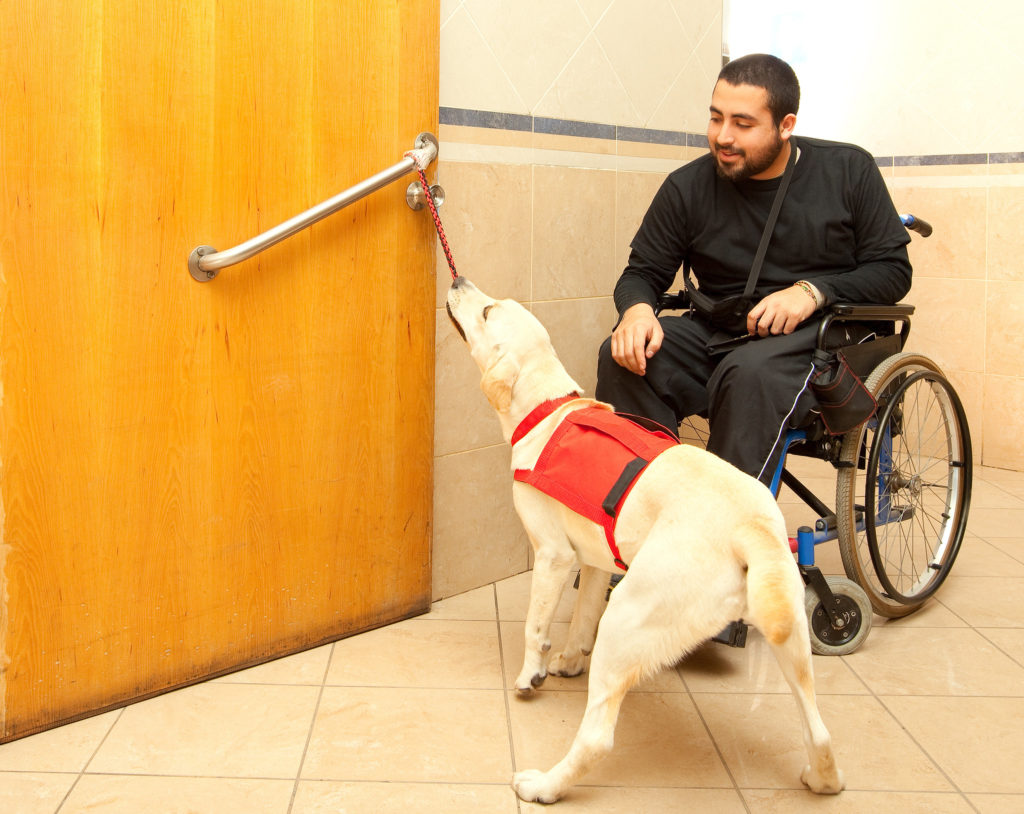September 2, 2021
People’s Best Friend
When you hear “service dog” what do you think of? I imagine a guide dog helping his owner safely navigate a busy intersection, or those ubiquitous plastic dogs in supermarkets accepting change to support Canadian Guide Dogs for the Blind. But in reality, service dogs fill many roles — some of which may surprise you.
Hearing dogs assist people who are deaf or have auditory impairment. These dogs alert their owners to doorbells, fire alarms, smoke alarms, telephones, etc.
Seizure alert dogs are not necessarily trained to detect oncoming seizures, but aid people with epilepsy by staying close to prevent injury, fetching medication and a telephone, notifying a caretaker, or activating an emergency call system.
Peanut detection dogs can scan environments to alert a person with allergies about traces of peanuts, including sniffing foods, smelling any item entering the home such as library books or toys, and even scanning guests before they enter the house to ensure they are free of any trace of peanuts. The dogs can also perform those same safety checks out in the world.
Autism service dogs help people diagnosed with autism spectrum disorder navigate uncontrollable triggers such as loud noises, large crowds, lighting and unfamiliar settings in general. The dogs also help with stress control and can bridge the gap between peers, allowing for greater opportunities for socialization. Service dogs can also help children learn responsibility, empathy, socialization and communication skills.
Diabetic alert dogs are specifically trained to alert people with diabetes or their caretakers of oncoming hypoglycemic or hyperglycemic attacks by noticing the change in odour emitted by a diabetic individual.
Search and rescue dogs aid police and other responders by searching and locating lost or missing people, as well as evidence.
Mobility assistance dogs help people with mobility disorders, such as cerebral palsy, or stroke, by performing everyday tasks like opening and closing doors and lights or picking things up from the floor.
PTSD service dogs lessen the impact of PTSD, by helping with daily physical tasks. The dog’s presence and companionship helps mitigate panic attacks, agoraphobia, flashbacks and grey outs, where those with PTSD lose track of where they are or what they were doing.
COVID-19 detection dogs may prove to help control the pandemic. There are strong indications that canines can accurately identify COVID-19 infection and scan high-traffic environments such as airports and subway stations faster than conventional testing.
September is National Service Dog Month. Let’s take a moment to appreciate how dogs make our community more accessible and help bring all of us a little closer together.
Bruce Roney
President & CEO

